Living Lab for Biodiversity
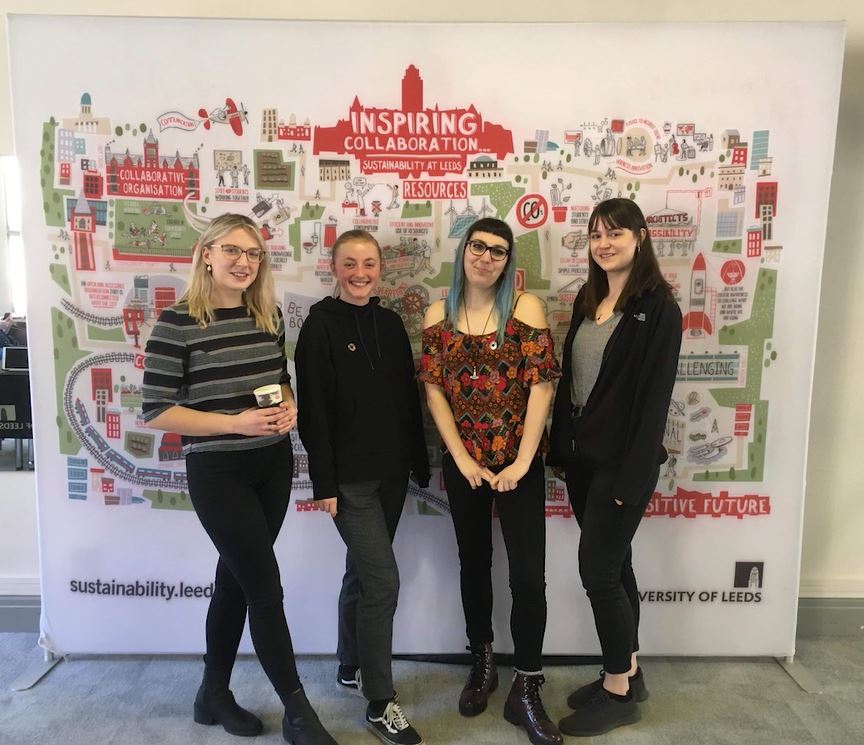
- Tags
- Bodington Fields
The Living Lab for Biodiversity links the latest academic understanding of urban habitats with operational site management, students and partners across the city to monitor and improve biodiversity.
Findings from the Living Lab have been used to inform decision making and policy, including the Landscape Strategy and Biodiversity Standard. The work helps to improve urban habitats, build knowledge and understanding of staff and students and creates teaching and research opportunities as well as improving wellbeing and health of the University community.
The programme continues to expand through collaborations between partners including the Sustainability Service, the Faculty of Environment, the Faculty of Biological Sciences, the Centre of Excellence for Modelling the Atmosphere and Climate (CEMAC) and the Leeds Ecosystem, Atmosphere and Forest (LEAF) centre. We are also working with Leeds City Council, the Environment Agency and many local schools and projects within the city to co-create solutions to city-wide urban biodiversity challenges.
The Sustainable Garden
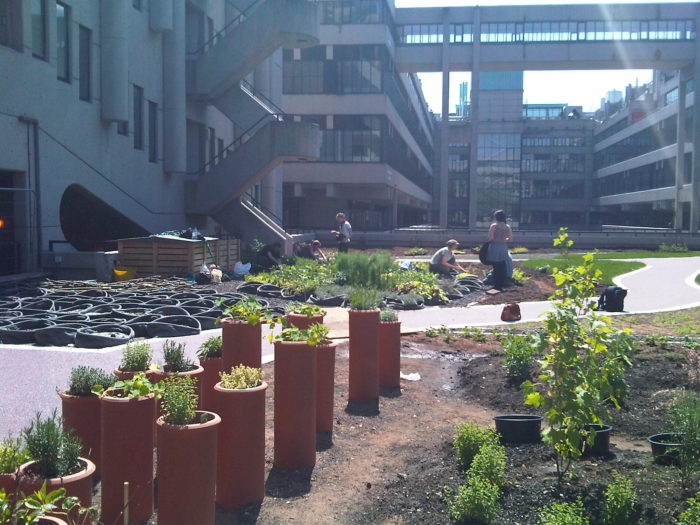
The Sustainable Garden was created in 2013 and is based on the Water@Leeds gold award-winning RHS flower show entry of 2012.
The Sustainable Garden is a multi-functional space for staff, students and visitors to campus to enjoy quiet contemplation, to cultivate an allotment-and-forest-style edible garden and provide opportunities for trialling and researching scalable, sustainable approaches, which in turn informs how we manage and interact with wider green spaces on campus.
The Roger Stevens Pond
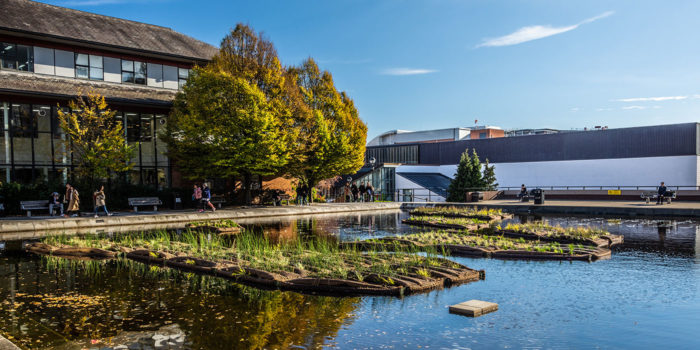
Originally a cooling pond serving the Roger Stevens Building, the Roger Stevens Pond is an integral part of the Grade II* listed buildings that surround it. The space is full of operational challenges and actually sits on a roof space, meaning that careful maintenance is required to enhance it for biodiversity.
In 2018, a collaborative working group was formed, comprising of operational and academic staff from the Facilities Directorate, School of Geography and the Faculty of Biological Sciences to develop sustainable solutions to improve the space.
The pond has been redesigned to support the Living Lab approach, with sub-aquatic planting pods that retain water even during drought or emergency situations and floating islands that are anchored to the floor. The pond is equipped with sensors and other equipment that provides students with access to data and the pond environment for use in taught modules and research projects. The analysis from these projects in turn is used to inform management of the site for biodiversity and amenity.
The pond is host to Mallards who visit annually for breeding and the introduction of fishes in 2019 has also attracted the attention of a heron, who can now also be regularly seen on site. As the planting becomes more established, damselflies have also been seen in the area as well as pipistrelle bats.
Biodiversity Ambassadors
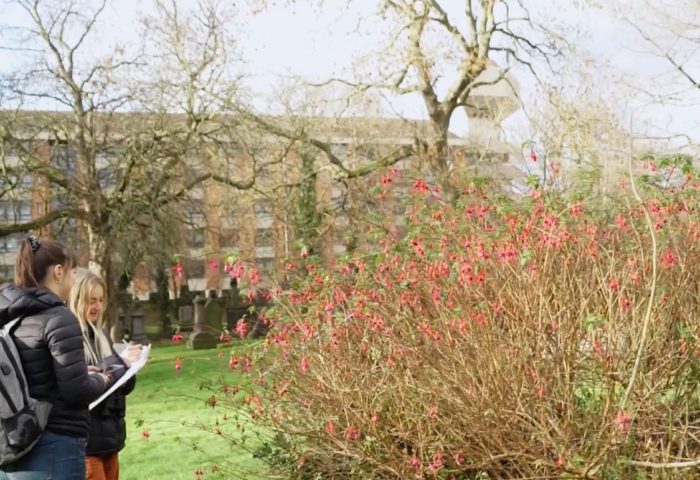
In 2018, an interdisciplinary group was formed comprising academic staff, Sustainability Services and Estates Services to address the need for more reliable campus habitat and species data, particularly pollinator species across the city campus.
Three student ‘Living Lab Ambassadors’ were appointed to establish three campus transects of 1km each with ‘stop’ points where Flower-insect Timed (FIT counts) could be conducted. Once established, the ambassadors then started recruiting student volunteers to complete surveys during lunchtimes or when moving around campus to improve wellbeing and increase campus interaction.
Due to the great initial success of the work, the ambassadors widened the scope to include birds, bats and mammals as well as the pollinator species recording.
As the project gathered momentum throughout 2019, the student ambassadors continued to develop the work, creating regular feedback to the group, who were then able to consider species detail when planning campus developments or landscaping programmes as well as developing interactive trails through the campus.
In 2020, one of the student ambassadors was appointed as a Student Sustainability Architect to continue leading the project, co-ordinating activities and ensuring future progression of new volunteers to becoming potential ambassadors on the programme.
This project methodology has created a template for community-led monitoring programmes that can be applied to any urban space and has been shared with other institutions around the globe, from Osaka University in Japan to Penn State University in the US. The initiative has also engaged the University with initiatives such as the ‘Hedgehog Friendly Campus’ scheme, securing access to training opportunities for grounds staff at the University and additional monitoring skills for the ambassadors and volunteers.
By using the Living Lab as a methodology, we have been able to build constructive and effective dialogue, facilitating useful and productive conversations about how academic research can be applied to deliver practical biodiversity improvements on the ground. In addition, the work has enhanced student opportunity and experience, providing ‘real-world’ experiences, new skills and improved wellbeing and health at the same time.
The Brownlee Triathlon Centre
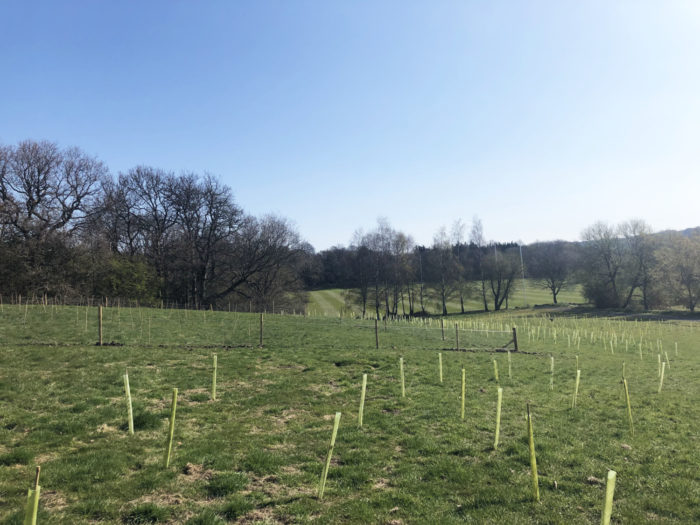
The Brownlee Triathlon Centre on the edge of the city has provided the University and the city with lots of opportunities to showcase the Living Lab. As part of a long-term investment by the University to develop a woodland and biodiversity haven on the site, in 2019, the University, in partnership with the Environment Agency and Leeds City Council, have planted more than 5,000 trees as part of the Leeds Flood Alleviation Scheme’s Natural Flood Management (NFM) programme that seeks to reduce flood risk in the city centre as well as building resilience to climate change adaption and resilience.
The project provides an excellent opportunity to link academic research to practical implementation, giving academic staff and students the opportunity to monitor and test methodologies and ideas in a real-world environment. Current projects include:
- Investigating the effects of the tree planting on flood mitigation and interventions such as leaky barriers;
- Investigating the attenuation pond species development
- Reviewing the electronic monitoring systems on the site, such as weather station data and live data collection from the attenuation pond on the site.
The site is set to open officially in spring 2022 and will lead to lots of new and exciting opportunities over the coming months and years. These include citizen science projects, outreach and wider public participation.
If you would like to get involved or find out more, please email: biodiversity@leeds.ac.uk
Keep up to date on the latest news
-
-
- Follow us on Twitter: @UoL_Sus
- Follow us on Instagram: @uol_sus
- Follow us on Facebook: @UoLSustainability
- Sign up to our Sustainability newsletter
-
 We use the United Nations Sustainable Development Goals (SDGs) as a framework to guide our activity.
We use the United Nations Sustainable Development Goals (SDGs) as a framework to guide our activity.
Find out more about our impact on the SDGs.
